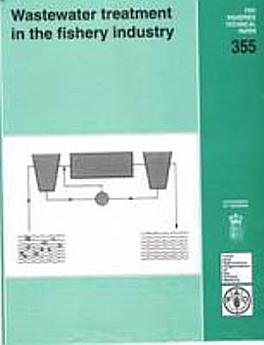

This document presents fish processors with an introduction to the concepts of fisheries wastewater characterization and the various types of treatment utilised. The topics dealt with include characterization analysis, primary treatment, biological treatment, physico-chemical treatment including disinfection, sludge treatment and disposed. Economic considerations are among the most important parameters that influence the final decision on which process should be chosen for wastewater treatment and these are presented in the final section. Contents Chapter 1:Introducation; Chapter 2: Wastewater Characterization; Physiocochemical Parameters, pH, Solids content, Temperature, Odour, Organic content, Biochemical oxygen demand, Dilution method, Alternatives to the dilution method for BOD determination, Chemical oxygen demand, Other methods for estimation of organic content, Total organic carbon (TOC), Relationships between estimates of the organic content, Oil and grease, Nitrogen and phosphorous, Characteristics of fish processing wastewaters, Sampling, Discharge limits; Chapter 3: Primary Treatment; Screening, Sedimentation, Separation of Oil and Grease, Flotation; Chapter 4: Biological Treatment; Aerobic processes, Activated sludge systems, Aerated lagoons, Aeration, Trickling filters, Rotating biological contractors, Selection of aerobic treatments, Anaerobic treatment, Digestion systems, Imhoff tanks; Chapter 5: Physico-Chemical Treatments; Coagulation-Flocculation, Disinfection, Chlorination, Ozonation; Chapter 6: Sludge Treatment and Disposal; Sludge transportation to treatment facilities, Sludge digestion, Land disposal of sludges, Sludge disinfection; Chapter 7: Economic Consideration; Cost of unitary process, Cost of operation and maintenance, Capital costs, Estimation of total costs.
Idioma
Inglés
Código ISBN
9788170354055
Editorial
daya books
Año de publicación
2005